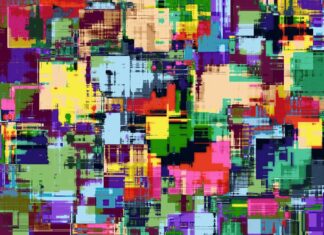MiniHUD is a new augmented reality (AR) display developed by researchers at the University of Arizona. It is a compact and lightweight device that can be worn like a pair of glasses, allowing users to view digital information overlaid onto the real world. MiniHUD has the potential to revolutionize the way we interact with the digital world, enabling new forms of communication, navigation, and entertainment. In this article, we will explore the features and applications of MiniHUD and examine its potential impact on various industries.
At its core, MiniHUD is a display technology that uses a miniature projector and optical components to overlay digital information onto the real world. The device is designed to be worn like a pair of glasses, with the projector and optics integrated into the frame. The projected image is reflected onto the user’s retina, creating the illusion of digital information overlaid onto the real world. This technology is known as retinal projection, and it has several advantages over other AR display technologies such as head-mounted displays (HMDs).
One of the main advantages of MiniHUD is its compact size and portability. Unlike HMDs, which can be bulky and cumbersome, MiniHUD is lightweight and can be worn comfortably for extended periods. This makes it an ideal solution for applications that require a high degree of mobility, such as navigation or outdoor activities. Additionally, MiniHUD’s compact size makes it an ideal tool for use in confined spaces, such as surgical procedures or industrial settings.
Another advantage of MiniHUD is its ability to provide a more natural and immersive AR experience. Because the projected image is reflected directly onto the user’s retina, there is no need for a physical screen or intermediary optics. This results in a more seamless and immersive AR experience, allowing users to interact with the digital world in a more natural and intuitive way. Additionally, because the projected image is overlaid onto the real world, it is easier for users to maintain spatial awareness and avoid accidents or collisions.
One of the key features of MiniHUD is its potential applications in various industries. In the healthcare industry, MiniHUD could be used to enable surgeons to view patient information and medical imaging in real-time, reducing the need for physical displays and improving surgical accuracy. In the manufacturing industry, MiniHUD could be used to provide workers with real-time information and instructions, improving productivity and reducing the risk of accidents. In the education industry, MiniHUD could be used to provide students with immersive and interactive learning experiences, allowing them to explore concepts and ideas in a more engaging way.
Another potential application of MiniHUD is in the entertainment industry. MiniHUD could be used to create immersive gaming experiences, allowing players to interact with digital environments in a more natural and intuitive way. Additionally, MiniHUD could be used to create immersive cinema experiences, allowing viewers to watch movies in a more interactive and engaging way.
Despite its many benefits, MiniHUD is not without its challenges. One of the main challenges facing MiniHUD is its cost. Because the technology is still in its early stages, it is relatively expensive to produce. Additionally, the device requires a high degree of precision and calibration, which can be time-consuming and expensive.
Another challenge facing MiniHUD is its potential impact on social interactions. Because the device is worn like a pair of glasses, it is possible that users could become isolated or disconnected from their surroundings. Additionally, the device could be seen as intrusive or distracting in social settings, potentially leading to social stigma or backlash.
In conclusion, MiniHUD is a promising new technology with many potential applications in various industries. Its compact size, portability, and immersive AR experience make it an ideal tool for use in settings that require a high degree of mobility or spatial awareness. While there are challenges facing the technology, such as cost and potential social impact, the potential benefits of MiniHUD make it a technology to watch in the coming years.
As the technology continues to advance, it is likely that MiniHUD will become more affordable and accessible, allowing for wider adoption and integration into various industries. Additionally, as more research is conducted on the social impact of AR technology, it is possible that new solutions and design principles will emerge that address the potential drawbacks of devices like MiniHUD.
Overall, MiniHUD represents a significant step forward in the development of AR technology. Its compact size, portability, and immersive AR experience make it a powerful tool for improving various industries and enhancing the way we interact with the digital world. As the technology continues to evolve, it is exciting to imagine the many ways that MiniHUD and similar devices will shape the future of communication, entertainment, and navigation.
MiniHUD is an exciting new technology that has the potential to revolutionize the way we interact with the digital world. By enabling a more natural and immersive AR experience, MiniHUD has the potential to improve various industries, from healthcare to education to entertainment.
In the healthcare industry, MiniHUD could be used to enhance surgical procedures by providing real-time information and medical imaging. Surgeons could use MiniHUD to view patient information and imaging without having to look away from the patient or refer to physical displays. This could improve surgical accuracy and reduce the risk of complications or errors.
In the manufacturing industry, MiniHUD could be used to provide workers with real-time information and instructions, improving productivity and reducing the risk of accidents. Workers could use MiniHUD to access assembly instructions or safety protocols without having to refer to physical manuals or displays. This could help workers perform tasks more efficiently and safely.
In the education industry, MiniHUD could be used to create more engaging and interactive learning experiences. By overlaying digital information onto the real world, MiniHUD could help students explore concepts and ideas in a more immersive and interactive way. This could help students better understand complex topics and retain information more effectively.
In the entertainment industry, MiniHUD could be used to create immersive gaming and cinema experiences. By overlaying digital environments onto the real world, MiniHUD could enable players and viewers to interact with their surroundings in a more natural and intuitive way. This could create a more immersive and engaging experience for users.
Despite its many potential benefits, MiniHUD is not without its challenges. One of the main challenges facing MiniHUD is its cost. As a relatively new technology, MiniHUD is currently expensive to produce. This could limit its adoption in certain industries and applications.
Another challenge facing MiniHUD is its potential impact on social interactions. Because MiniHUD is worn like a pair of glasses, it is possible that users could become isolated or disconnected from their surroundings. Additionally, the device could be seen as intrusive or distracting in social settings, potentially leading to social stigma or backlash.
To address these challenges, it will be important for researchers and developers to continue to refine the technology and explore new applications and design principles. As the technology continues to evolve, it is likely that MiniHUD will become more affordable and accessible, allowing for wider adoption and integration into various industries.
Additionally, it will be important to consider the potential social impact of MiniHUD and similar devices. As more research is conducted on the effects of AR technology on social interactions, new solutions and design principles may emerge that address the potential drawbacks of devices like MiniHUD.
Overall, MiniHUD is an exciting new technology with many potential applications in various industries. Its compact size, portability, and immersive AR experience make it a powerful tool for improving various industries and enhancing the way we interact with the digital world. While there are challenges facing the technology, such as cost and potential social impact, the potential benefits of MiniHUD make it a technology to watch in the coming years.






















